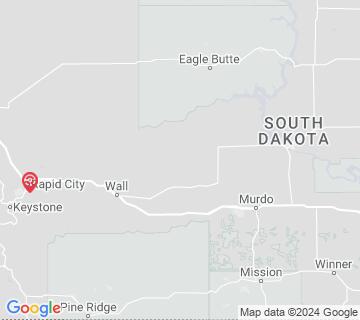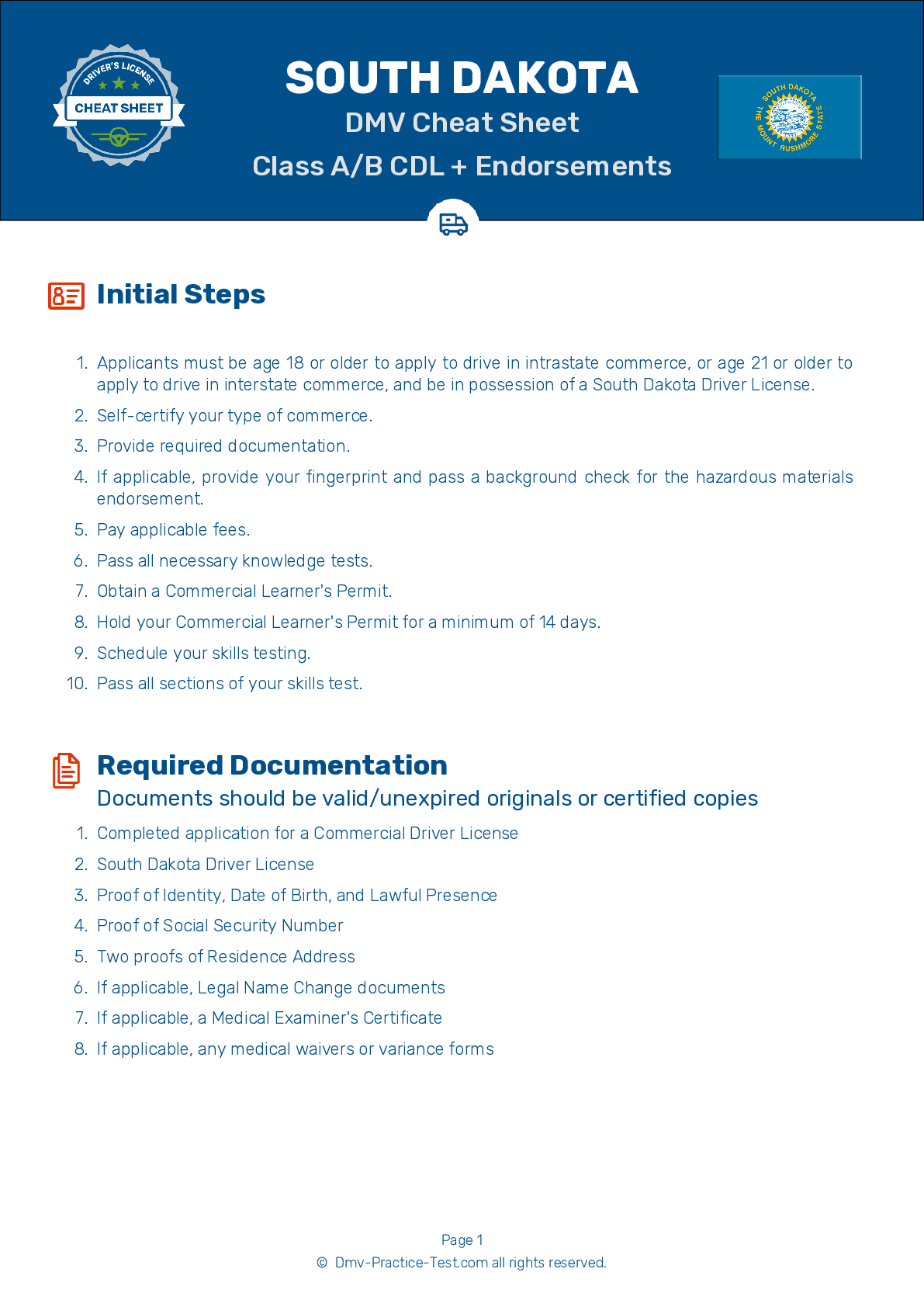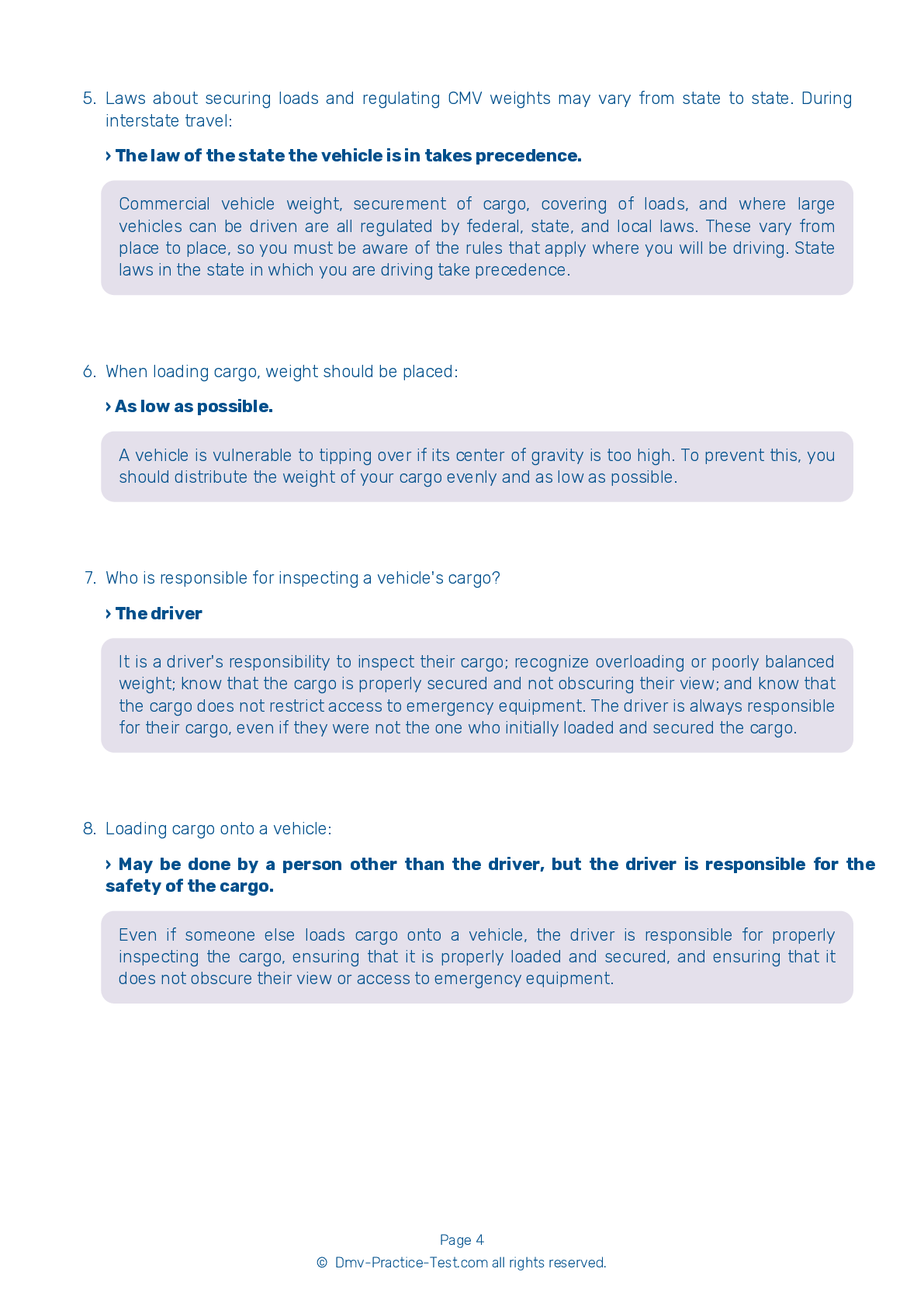Bus #2
Bus Driver Testing | South Dakota 2025 #2 Page 2 of 3
Train for FREE online with our SD bus CDL test. The official exam test consists of several obligatory parts, with all of them checking your knowledge of different blocks of road rules. If you need to obtain a license in South Dakota in 2025, learn how to become a bus driver and then practice as much as possible. Free sample tests published on our website will help you check and improve your knowledge and boost your grades. Please bear in mind that DMV requirements for a bus driver may vary from state to state.
20
16
20
8 . When should you inspect the mirrors on a bus?
Is not necessary to inspect the mirrors.
The mirrors of a bus should always be inspected before a trip. Adjust them as necessary before beginning to drive.
9 . As students exit a school bus, the driver should watch to ensure that they:
It is possible for students to be injured, or even killed, as a result of their clothing, accessories, or bodies getting caught on a handrail or door while exiting a school bus. The driver should closely watch students as they exit to ensure that they have all unloaded the bus successfully and have reached a safe location.
10 . When checking the springs during a vehicle inspection, do all of the following, except:
Glue cracked leaf springs.
When checking the springs as part of the vehicle inspection test, you should look for missing, shifted, cracked, or broken leaf springs, as well as broken or distorted coil springs. If the vehicle is equipped with torsion bars, torque arms, or other types of suspension components, ensure that they are not damaged and are mounted securely.
11 . Crossover mirrors help the driver see:
Crossover mirrors are used to help a driver see the danger zone area directly in front of a school bus. The mirrors should also display the danger zone areas to the left and right sides of the bus, including the area from the front of the bus to the service door.
12 . Before evacuating a bus in response to a hazard, a driver should:
If time permits, before deciding to evacuate a school bus, the driver should contact their dispatcher to explain the situation. The decision to evacuate must be a timely one.
13 . If you come to railroad tracks while driving a school bus, you should generally:
In general, school bus drivers should stop before any railroad crossings to check the tracks for approaching trains. Drivers should stop no closer than 15 feet and no farther than 50 feet from the nearest rail in order to have the best view of the tracks. They should look and listen for approaching trains before proceeding through the crossing.
14 . Properly adjusted mirrors on a school bus allow the driver to see ____ behind the bus.
1,000 feet
Proper mirror adjustment is vital to the safe operation of a school bus. A bus's flat mirrors should be adjusted so the driver is able to see 200 feet, or four bus lengths, behind the bus.
Search the best driving school in your neighbourhood
2025 South Dakota | Frequently Asked Questions
To secure a CDL Doubles/Triples endorsement in South Dakota, you must already possess a Commercial Driver's License (CDL). Then, you need to pass the Doubles/Triples Endorsement knowledge test. Study the relevant sections in the South Dakota CDL Manual beforehand. After passing the test, you'll receive your endorsement. Remember, driving experience with these types of vehicles is recommended.
To obtain a CDL Doubles/Triples license, you must already have a Commercial Driver's License (CDL). Then, pass the Doubles/Triples endorsement knowledge test. This test covers information found in the South Dakota CDL manual. It is also beneficial to have practical experience driving these types of vehicles, although not required. After passing the test, you'll receive your endorsement.
While specialized experience or training isn't a legal requirement for a CDL Doubles/Triples endorsement in South Dakota, it's highly recommended. Knowledge of handling these vehicles can be beneficial for the endorsement knowledge test. Studying the South Dakota CDL Manual, particularly sections on Doubles/Triples, is essential. Practical experience can also increase your chances of passing the driving test.
Yes, to obtain a CDL Doubles/Triples endorsement in South Dakota, you must pass an additional knowledge test specifically for Doubles/Triples. This test covers topics like coupling and uncoupling, inspecting doubles and triples, and handling these types of vehicles. The information for this test is found in the South Dakota CDL Manual.
The CDL Doubles/Triples endorsement test in South Dakota is a knowledge test, not a skills test. Therefore, you won't need to showcase any specific maneuvers. However, the test will cover topics such as coupling and uncoupling, inspecting doubles and triples, and the procedures for handling these types of vehicles. It's essential to understand these aspects thoroughly.
No, it is not permissible. In South Dakota, you must have a valid Commercial Driver's License (CDL) with a Doubles/Triples endorsement to legally operate double or triple trailers. Operating these vehicles without the proper endorsement can result in serious penalties, including fines and potential suspension of your CDL.
To add the CDL Doubles/Triples endorsement to your current license in South Dakota, you will need to initiate a new application. You cannot simply append the endorsement to your existing license. You will have to meet the requirements, including passing the knowledge test and paying the necessary fees, to obtain the endorsement.
Yes, there are some limitations for drivers holding a CDL Doubles/Triples endorsement. These drivers are only allowed to operate double and triple trailers. They cannot operate other types of commercial vehicles unless they have the appropriate endorsements. Also, they must follow all federal and state regulations regarding maximum weight, length, and safety requirements for double/triple trailers.
In South Dakota, the maximum legal weight for a vehicle (including double/triple trailers) is 80,000 pounds. The maximum length for a double trailer is 81.5 feet and for triple trailers, it's 103 feet. However, these limits can be exceeded with special permits, which are issued based on factors like route capacity and vehicle configuration.
Yes, there are specific safety guidelines. Drivers with a CDL Doubles/Triples endorsement must perform regular inspections to check brakes, tires, lights, and other safety equipment. They must also follow special procedures for coupling and uncoupling trailers, and they must maintain safe following distances to allow for the increased stopping time needed for these larger vehicles.




